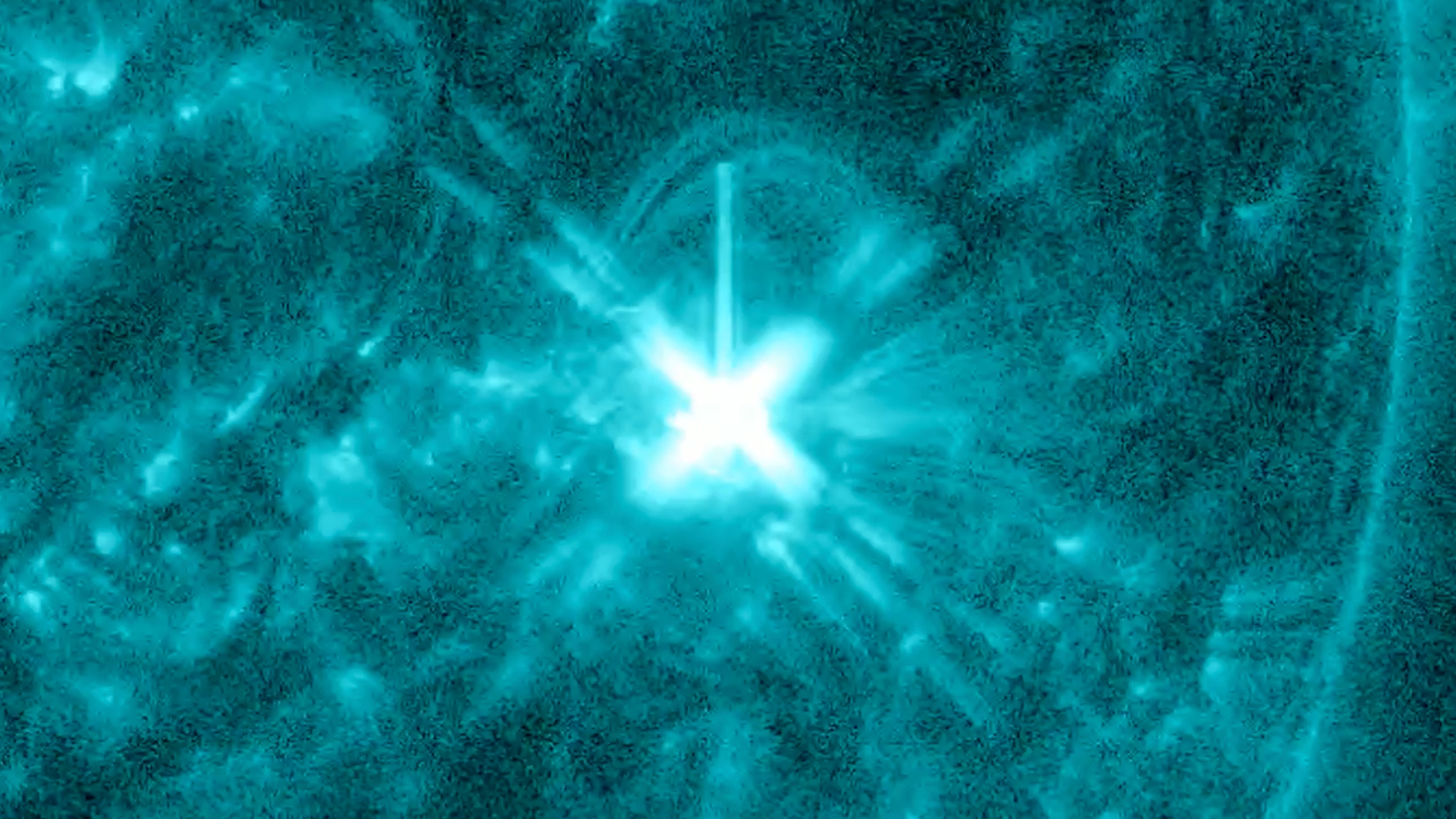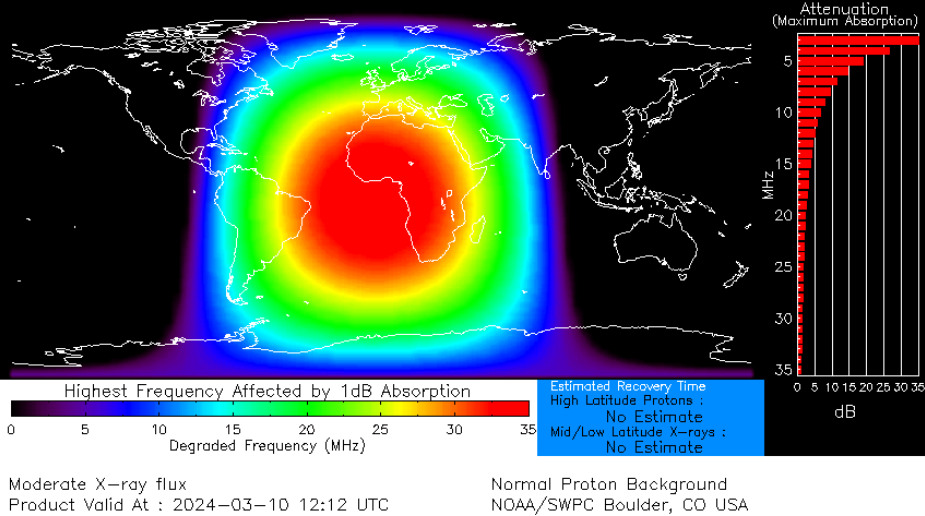
The relatively small, unassuming sunspot AR3599 has been crackling with minor solar flares in recent days — but it surprised everyone by unleashing a strong M7.4 class solar flare on Sunday (March 10) at 8:13 EDT (1213 GMT).
The flare was also accompanied by a coronal mass ejection (CME) — a large release of plasma and magnetic field from the sun. The CME is barreling through space at around 1.7 million mph (750 km/s), according to spaceweather.com, but to the disappointment of aurora chasers, it's predicted to pass ahead of our planet. However, we can keep our fingers crossed for a possible glancing blow, as suggested by a NASA model, that could trigger minor G1-class geomagnetic storms on March 13.
Just eight minutes after the solar flare erupted, an extensive radio blackout was experienced across Africa and the South Atlantic. According to spaceweather.com, ham radio operators may have experienced signal loss for up to 30 minutes after the flare. Blackouts like this are common after powerful solar flare eruptions occur, as these events release a strong pulse of X-rays and extreme ultraviolet radiation which travel towards Earth at the speed of light. When the radiation hits Earth's atmosphere, it ionizes the upper layer known as the thermosphere — causing shortwave radio blackouts on the portion of Earth that was facing the sun at the time of eruption.
Related: Widespread solar storm struck spacecraft near the sun, Earth and even Mars

What are solar flares?
Solar flares are triggered when magnetic energy builds up in the sun's atmosphere and is released in a vigorous burst of electromagnetic radiation. They are categorized by size into lettered groups, with X-class being the most powerful. There are then M-class flares that are 10 times smaller than X-class flares, followed by C-class, B-class, and finally, A-class flares which are too weak to significantly affect Earth. Within each class, numbers from 1 to 10 (and beyond, for X-class flares) denote a flare's relative strength. The recent flare clocked in at M.7.43, according to Spaceweatherlive.com. This result was achieved using data from NASA's GOES-16 satellite.







